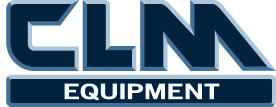How Small Businesses Can Boost Operational Efficiency
Running a small business often means balancing limited time, money, and people. Finding ways to work smarter, not harder, is essential for growth and survival. By focusing on systems, automation, and smarter decision-making, you can reduce waste, improve customer experience, and keep your team aligned.
Streamline Your Processes Early
One of the most impactful steps is simplifying workflows before they become overly complex. Mapping out how tasks move from start to finish makes it easier to spot bottlenecks. For instance, a retail shop might discover that manual inventory tracking is slowing down restocking. By switching to an automated system, they can free up hours each week.
Helpful guides like the U.S. Chamber of Commerce resources provide checklists for common small business processes, ensuring you’re not missing key compliance or efficiency steps.
Harness Digital Tools for Daily Operations
Digital tools can dramatically increase efficiency across communication, project management, and customer engagement.
-
Use cloud storage for easier collaboration.
-
Adopt scheduling apps to avoid double-bookings.
-
Employ expense tracking tools to reduce manual errors.
These changes not only improve speed but also reduce the risk of human error. For inspiration on choosing reliable digital tools, check the Small Business Administration’s technology resources.
Leveraging Smarter Systems for Growth
Modern tools now go beyond basic software. They can automate repetitive administrative work, help you spot trends in customer data, and even support customer service around the clock. These systems help small teams do more with less—freeing up valuable time for strategy and growth.
For a deeper look at practical examples and benefits, explore this resource on exploring artificial intelligence in business.
Efficiency Strategies Every Small Business Can Use
Here are actionable strategies you can apply right away:
-
Automate recurring tasks (payroll, invoicing, inventory alerts).
-
Standardize training with simple onboarding checklists.
-
Adopt lean project management to cut out unnecessary steps.
-
Track performance metrics regularly to see what’s working.
-
Encourage employee input for spotting inefficiencies.
For more hands-on frameworks, you can review structured checklists from Score.org, which provides free mentoring and templates for entrepreneurs.
Comparison Table: Manual vs. Optimized Approaches
|
Area |
Manual Approach |
Optimized Approach |
Benefit |
|
Invoicing |
Handwritten or emailed individually |
Automated invoicing software |
Saves hours, fewer errors |
|
Scheduling |
Paper calendar or spreadsheets |
Online scheduling tool |
Reduces conflicts, easy updates |
|
Inventory Tracking |
Manual counts at month-end |
Real-time inventory system |
Prevents stockouts and over-ordering |
|
Customer Service |
Phone-only support |
Live chat + automated support system |
Faster response, better satisfaction |
For more details on digital transformations, the Harvard Business Review’s case studies highlight how even small firms benefit from operational upgrades.
FAQ: Boosting Efficiency in Small Businesses
What’s the first step to improving efficiency?
Start by identifying bottlenecks in current workflows. Even a simple process map can reveal unnecessary steps.
Are automation tools expensive?
Many options scale with your business. Some start free or at low cost, then expand as you grow.
How can small businesses measure efficiency improvements?
Track metrics like turnaround times, customer response speed, and cost per task to gauge progress.
What if my team resists new systems?
Involve them in the decision process. Demonstrating how tools reduce their workload helps build buy-in.
A Quick Highlight on a Helpful Tool
One noteworthy option is Monday.com, a platform that simplifies task management and team coordination. It’s especially useful for small teams juggling multiple priorities. While not a fit for every business, its flexible setup makes it easy to adapt to different industries.
Conclusion
Boosting operational efficiency isn’t about working longer hours—it’s about removing friction from your daily operations. By mapping processes and encouraging team input, small businesses can achieve more with fewer resources. Over time, these improvements not only save money but also build a foundation for sustainable growth.
Discover how the Broussard Chamber of Commerce puts business and community first—explore their annual report, monthly news, and more today!




